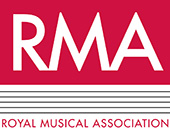The annual Digital Libraries for Musicology conference (DLfM21) was held as a virtual conference this year in association with the International Association for Music Libraries (IAML) Congress, with event programming spread over 2.5 days from July 28th through July 30th 2021. This organizational timeline facilitated an online, international conference which was aimed to foster inclusion over a range of time zones (prioritizing UTC-5 through UTC+2). Our conference brought together musicologists, music librarians, music technologists, and other music specialists to share novel research and foster critical discourse on the myriad of issues and approaches to working with digital musical material. This included (but was not limited to) various challenges and digital methods and advances relating to: archiving, classification, querying, representation, viewing, analysis, as well as the linking of extra-musical or non-musical data or generally bringing together disparate sources of musical information.
This year’s theme was “bridging the gap.” The topics and areas of expertise within the DLfM community are broad. Frequently, scholars work mainly in one particular subfield and have limited knowledge of the problems, innovations, or even general scope of those who work within a different subfield. The goal behind this theme was to bring together those working within or across these niche subfields (such as: digital libraries and humanities, computational musicology, or MIR) with the aim of broadening the understanding of the various needs, obstacles, and optimal outcomes of each, and how outcomes in one area could best be applied to (or served by) another. The conference organizers encouraged, but did not require, submissions to conform to the theme. Traditional DLfM topics were also welcomed.
The DLfM programming consisted of two joint sessions with IAML and a day of “solo” DLfM sessions. Our joint poster session on July 28th using the web software gatherTown (https://www.gather.town), and all paper sessions were held live using Zoom software. The main DLfM programming took place on July 29th and consisted of three separate sessions. Paper presentations were organized and grouped along three general subthemes. These were: (Session 1) Novel approaches to audio analysis for classification; comparison, or query; (Session 2) Corpora and computational analysis of non-Common-practice-Era music; and (Session 3) Representing chords, intervals, rows, and sets. Our joint paper session with IAML took place on July 30th and featured three presentations on our conference theme, bridging the gap. There were a total of 13 poster presentations and 12 paper presentations.
The conference brought together more than 200 people (since IAML members combined with DLfM members for joint programming). Thanks to the generous contributions from Goldsmiths, Georgia Tech, and the RMA, we were able to offer free registration to all participants. We received positive feedback from numerous attendees on the calibre of the presentations, as well as the fun, engaging, and interactive audience experiences brought about through the use of the gatherTown software.
Numerous papers and posters this year presented novel datasets, corpora, and digital tools available to the public. For instance, Nádia Carvalho and colleagues (Universitat Pompeu Fabra, Spain) presented “I-Folk,” a new database of annotated Iberian folk music as well as several novel tools for navigating and retrieving content; Mark Gotham (Universität des Saarlandes, Germany) and Jason Yust (Boston University, U.S.A.) presented a digital library of 12-tone rows from post-tonal repertoire, demonstrating applications for analysis and music pedagogy; and Mary Emmett (University of York, U.K.) presented a small corpus of folk songs (80 Lakeland hunting song tunes) primarily as a means of demonstrating a novel software for searching musical content by singing, humming, or typing a musical fragment.
Notable poster presentations included Joshua Stutter’s (University of Glasgow, U.K.) work presenting a catalogue of facsimiles, texts, and metadata of thousands of 17th and 18th century canons and drinking songs; Julia Jacklin’s LAMA (Linked Annotations for Media Analysis) project for analyzing audiovisual material, and the impressive work of Antonio Madueño and colleagues (Universidad de Cordoba, Spain; Universidad de Alicante) on a complete pipeline for automatizing the encoding of incipits for thousands of musical works.
Our joint paper session with IAML had the largest turnout, and showcased three different projects relating to our “bridging the gap” theme, all of which were large-scale collaborative endeavors that represented years of work. This session had a unique format where talks were presented back-to-back with a lively panel-style discussion afterwards. Attendees seemed especially excited about the applications of the three projects presented, especially in terms of their potential for large-scale cross-collaboration and integration.
Each of the four paper sessions took place over a separate live-streamed Zoom meeting. All meetings were recorded, and the recorded presentations are publicly available online via the “Unlocking Musicology” channel on YouTube. All papers have an accompanying peer-reviewed, open-access proceedings article, accessible through the DLfM21 web page (https://dlfm.web.ox.ac.uk/2021-programme).
Claire Arthur is an assistant professor in the school of music at the Georgia Institute of Technology, and was also the programme chair for DLfM21. This conference report was written with assistance from Rhythm Jain, a Master’s student in the Georgia Tech Center for Music Technology and DLfM21 attendee.
